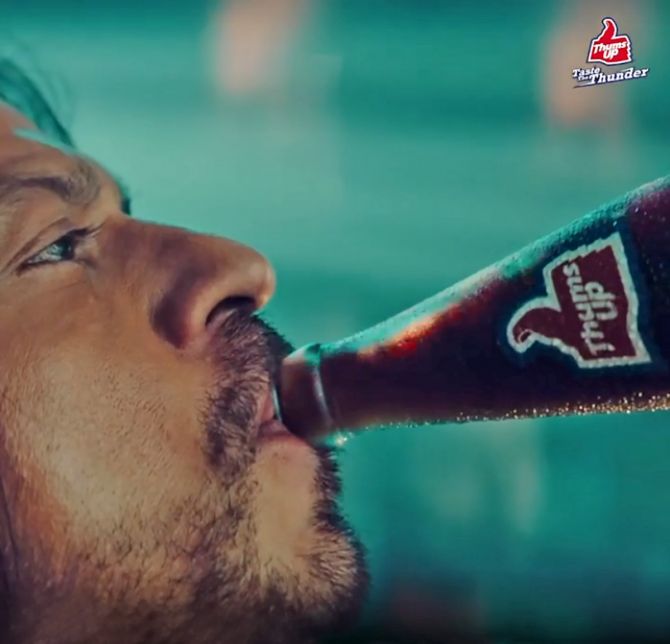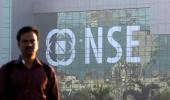Pepsi and Coca-Cola’s target audience is in the 20s, or younger. Brand experts debate whether the last of cinema’s ‘superheros’ transcend the age gap.
Akshara Srivastava reports.

“King Khan is back” tweeted a user on the evening of February 22, after Thums Up’s new ad campaign starring Bollywood superstar Shah Rukh Khan hit the screens.
In the ad, SRK sports a long-haired look that will be seen in his upcoming movie, Pathan — a far cry from his metrosexual, romantic-hero image.
The rugged look, say ad gurus, is more suited for Thums Up, the Coca-Cola brand that has positioned itself as the taste of thunder.
Or, as the new tagline says, “toofan”.
Meanwhile, rival PepsiCo, too, has a Khan in its quiver: Salman Khan.
Onboarded as the ambassador for its Swag campaign in 2019, he will appear in Pepsi’s new ad sometime mid-March.
The clash of the Khans apart, the question is: What is it about them that the two brands whose target audience is largely the youth, the 20-somethings or younger, have sought them out?
Both SRK and Salman Khan turn 57 this year.
In less than three years, they will, if you think about it, be senior citizens.
“Amitabh Bachchan is touching 80, and yet there’s a slew of brands outside his door.
"I don’t know which generation he is speaking to.
"If at 80 he can be relevant, then the Khans must also be relevant,” says Sandeep Goyal, chief mentor of the Indian Institute of Human Brands.
Goyal is of the view that “there is no logic to this choice.
"Shah Rukh and Salman have no business being in a cola brand, the core target audience of which, the 18-year-olds, is much younger and is not aspiring to be either of the Khans.”
Not everyone agrees, though.
“Film stars cut through all barriers — age, income, etc,” says Ambi Parameswaran, founder Brand-Building.
“They are larger than life and appeal to a wide cross section of Indian consumers.”
Samit Sinha, founder, Alchemist Brand Consulting, echoes the view: “Age becomes irrelevant.
"It’s unfortunate, but male stars have a longer career span than female stars.
"Even in their mid-50s, far from the age of their target audience, they still remain relevant and aspirational for the youth for a much longer period of time.” Parameswaran cites SRK’s Santro ad as an example: “You think consumers believe he drives a Santro? Here, at least, it is a little more relatable.”
The Khans, one could argue, are possibly the last of the superstars to command the kind of fandom that they do.
The phenomenon called SRK, for instance, has been strong enough to merit a serious book.
Case in point: Economist Shrayana Bhattacharya’s Desperately Seeking Shah Rukh.
That may be so but Goyal argues that was the case yesterday.
“Shah Rukh has not had a hit in 10-12 years.
"Salman’s logic that even if he makes bad films, they will work is not true anymore — these are true indicators,” he says.
“Fan following and social media numbers are crooked (SRK has 42.2 million followers on Twitter and 28.1 million on Instagram; Salman Khan has 43.8 million on Twitter and 49.9 million on Instagram; both less than Akshay Kumar).
"Yes, the Khans have massive fan following, but it is a completely different thing for the brand.”
Parameswaran has another take: “These stars are good at managing the perception about them, so it is quite likely that Shah Rukh wanted to endorse a brand appealing to the young.”
And his rough look goes with the brand’s profile.
“Thums Up has always been a chaati be baal, haath mein bandook (hair on chest, rifle in hand) brand, which is a very North Indian vision of machismo,” says ad guru Prahlad Kakkar.
From “Happy days are here again” to “Taste the thunder”, it has reinvented itself as a masculine brand for those with a passion for action and adventure.
And now the shift from “thunder” to “toofan”, from English to Hindi, is perhaps aimed at targeting a wider audience, at democratising the brand.
Goyal doesn’t think so. Thums Up, which is a homegrown brand, he says, was always available in the hinterlands, unlike foreign brands that were city-specific.
About Pepsi going with Salman Khan, Sinha says, “They may have wanted to massify Pepsi and make it more popular in smaller towns, and wanted someone who was popular in those demographics.”
Then Thums Up would have looked for someone with an equivalent level of popularity and almost by default, the choice was Shah Rukh, he adds.
“In addition, they might have wanted to capitalise on his upcoming movie where he plays an action hero.”
Pepsi, says Kakkar, stands for an irreverent, extremely anti-system youth, and it constantly pushes the status quo.
“Coke, meanwhile, stands for family values, so its target audience is also slightly older or very young.”
There is another matter, too. People haven’t forgotten that not long ago, Salman Khan was endorsing Pepsi rival Thums Up.
“Brands hope that after a cooling-off period of a few years, association of their brand ambassador with another brand is forgotten, which is not the case.
"They need to account for an ad’s impact, not consider longevity,” says Kakkar.
Expert views aside, both brands say going with the respective Khan was a well-thought-out strategy.
“The campaign celebrates the coming together of two iconic Indian names — an iconic Indian beverage brand, Thums Up, and the king of Bollywood, Shah Rukh Khan,” says Arnab Roy, vice president and head-marketing, Coca-Cola India and South West Asia.
“It builds on Thums Up’s strong taste and experience, while displaying unwavering tenacity.”
Saumya Rathor, category lead, Cola, PepsiCo India, says, “Given Salman’s effortlessly cool attitude, the young generation strongly relates with him, and he resonates with the brand's philosophy of swag in a way no one else can.”
He adds, “We believe that the combination of Salman Khan’s wide appeal across geographies, strong connection across generations and genders makes him the perfect fit to drive home our message and engage with consumers.”












 © 2025
© 2025